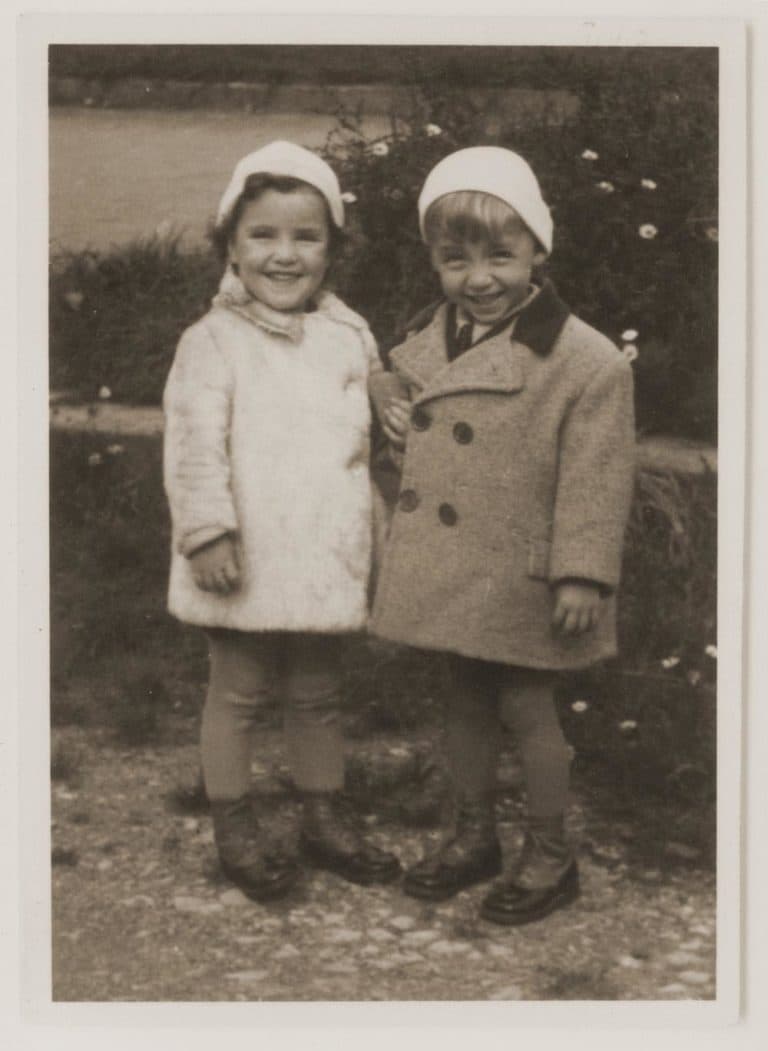Advertisement
Exhibit Highlights The Holocaust's 'Deadly Medicine'
Resumehttp://www.youtube.com/watch?v=iKaGPmb6eTE
My name is Irene Hizme. I was born as Renata Guttmann. And I survived the Holocaust.
Doctors are meant to be healers, doing all in their power to cure the sick. Sometimes, that mission gets perverted.
During World War II, Nazi authorities sought to develop a stronger and healthier human race. They hoped that by removing "bad" genes from the gene pool and by encouraging healthy people have large families, they could become an all-powerful master race.
The Nazi's systematic eugenics program meant the mass murder of millions.
We were born in Czechoslovakia, near Prague in Dec. 21, 1937.
"We," Hizme said, because she is a twin. She was born with the name Renata. Rene was her twin brother.
To understand the Nazi racial purity efforts, one has to understand Germany in the 1920s. Germany had lost 2 million men — an entire generation of fathers — in World War I. Eugenics was seen as a way to restore German greatness.

Germany was also a world leader in science and medicine. However, the concept of "racial hygiene", as it was called, was still too politically unpalatable. But then, in 1933 Adolf Hitler took power and everything changed, including science. Medicine became linked to politics, when prominent scientists worked with the Nazi regime.
"It's important that scientists, important scientists, were now legitimizing and lending legitimacy to Nazi racial policies," said Susan Bacharach, the curator of special exhibitions at the U.S. Holocaust Memorial Museum in Washington, D.C.
In 1943, Rene and I and our mother were sent to Auschwitz.
Hizme's father had been arrested two years earlier. When she and her brother were sent to Auschwitz, they were 5 years old. About three months into their captivity, the twins were torn from their mother.
I just remember this piercing cry, and we never saw her again.
The campaign grew. First with the mass sterilization of more than 400,000 Germans, most of whom failed to pass "intelligence tests." Then with a secret Nazi program of mass murder that began with children.
"This program provides a model for the mass murder of Jews in gas chambers which are installed in Nazi camps in occupied Poland in 1942," Bacharach said.
So, Irene's mother was murdered. Irene was only saved because she was a twin.
Because I was a twin, I now belong to the most exclusive club in the world: the Mengele twins. And I became a human guinea pig.
"Mengele" is Dr. Josef Mengele. He was known as the "Angel of Death".
The Nazi doctor had a particular fascination with the genetic origins of disease. Twins, with their shared genomes but different environmental experiences, were the perfect experimental subjects. But what happened to Hizme in 1943 was actually the apex of a long, calculated campaign that had sought a scientific justification for genocide for almost a generation.
Hizme was just one of many children that Mengele used as test subjects, kept alive merely on his whims. Miraculously, she survived the war.
If I knew what it meant to die I probably would have wished I could die.
It all seems so morally reprehensible now, so historically remote. Except that it's not.
"Deadly Medicine," the exhibit at the Holocaust Museum that features Hizme's story, is an exploration of the lengths to which a group will go to pursue genetic purity. The museum was inspired to create the display not by history, but by the present pace of genomics research. Research that is sure to transform human health for the better, but not without rigorous ethical oversight.
Remembering what happens in the absence of such oversight is the reason why Scott Podolsky, director of the Center for the History of Medicine at the Countway Medical Library, wanted to bring the "Deadly Medicine" exhibit to Harvard Medical School.
"The technologies that we have and will have will outrace the implications of what we can do with those technologies and we have to be very critical,” Podolsky said.
Guests:
- Irene Hizme, holocaust survivor
- Susan Bacharach, curator of special exhibitions, U.S. Holocaust Memorial Museum
- Scott Podolsky, director, Center for the History of Medicine at the Countway Medical Library, Harvard
This segment aired on April 26, 2011.